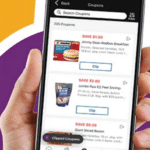
Just how much is the cost of convenience exactly? Most shoppers who buy their groceries online know they’re paying for the privilege. But how much more? There are often delivery fees, convenience fees, pickup fees – and hidden fees, in the form of marked-up prices, where the very same items that cost less in store, cost more online.
But good luck finding out what some of those markups are, unless you walk the store looking at price tags and comparing them with how much the same items cost online. If you live in New York state, however, online grocery retailers soon may be required to tell you just how marked-up those prices are.
The state Senate is considering a bill that would require retailers or delivery services selling groceries online to “clearly and conspicuously state any price mark-up on any product that is also offered in-store.”
The measure is a companion bill to one introduced in the state Assembly earlier this year. But that one has been stalled since its introduction, making little progress toward becoming law. The Senate bill serves to rejuvenate the issue, as it’s currently poised to be discussed and debated in the Consumer Affairs and Protection Committee. If it works its way toward a full vote, that could nudge the Assembly to act on its own bill, and ultimately send the measure to the governor’s desk for her potential signature.
The proposal would mandate that any differences in price for grocery products sold online and in-store be clearly disclosed, so an online shopper knows exactly how much more they’re paying for the same items online. If a retailer instead charges “a general markup” for any online order, that too should be clearly disclosed on the front page of the website or mobile app.
A memo accompanying the original Assembly version of the bill explains the motivations behind the measure. “Online ordering and delivery of groceries has grown exponentially in the past decade,” it reads. “However, retailers and services often mark-up the prices of products over the in-store price. This (is) in addition to any delivery or service fees charged. This mark-up is not always clearly stated to the consumer.”
The goal, the memo continues, “is to provide the consumer transparency in deciding if they want to pay a higher price for delivery. It does not outlaw the practice, just requires companies be open and transparent about what mark-ups they are charging.”
Charging higher prices per item has long been a sneaky way that retailers can make you pay more for ordering online. It can be a way to keep delivery and service fees low, and make you think you’re getting a deal. But if each individual grocery item you buy online is a few cents or a few dollars more than it would cost you in store – and you don’t even know about it – that can really add up.
By requiring retailers to display both in-store and online prices, the sponsors of these New York bills hope to help you make a more informed decision about whether buying your groceries online is worth saving yourself a trip to the store.
Oddly enough, at least one retailer once complied with these requirements, long before New York proposed them, and did so completely voluntarily – for the express purpose of showing you just how much more buying your groceries online would really cost you. For a time back in 2017, Walmart’s website displayed two prices for many of the grocery products it sold – an online price, and a price for that same product in the store, which was often considerably less.
Why would Walmart want to call attention to its own markups? “It simply costs less to sell some items in stores,” a Walmart spokesperson told the Wall Street Journal at the time. So Walmart was passively discouraging shoppers from buying online, since delivery costs Walmart more than simply stocking its shelves in-store. As the head of Walmart’s e-commerce business explained, “there’s no cheaper way to get these products to consumers than have them come in the store and pick it off the shelf themselves.”
So in Walmart’s case, it was a bit of reverse psychology, discouraging overuse of a service it was already providing. Today, in New York, it’s about transparency – not discouraging you from shopping online, but making sure you know exactly how much it’s costing you.
And it could ultimately cost noncompliant retailers, if the measure becomes law. Any violation of the pricing disclosure rules would result in a fine of up to $100, increasing to $250 for subsequent violations.
If the measure fails to become law in New York – or if you live in another state without such a pricing requirement – ordering your groceries online will remain a matter of “buyer beware.” And it will be up to you to decide whether the cost of convenience is a price you’re no longer willing to pay.
Image source: Instacart










